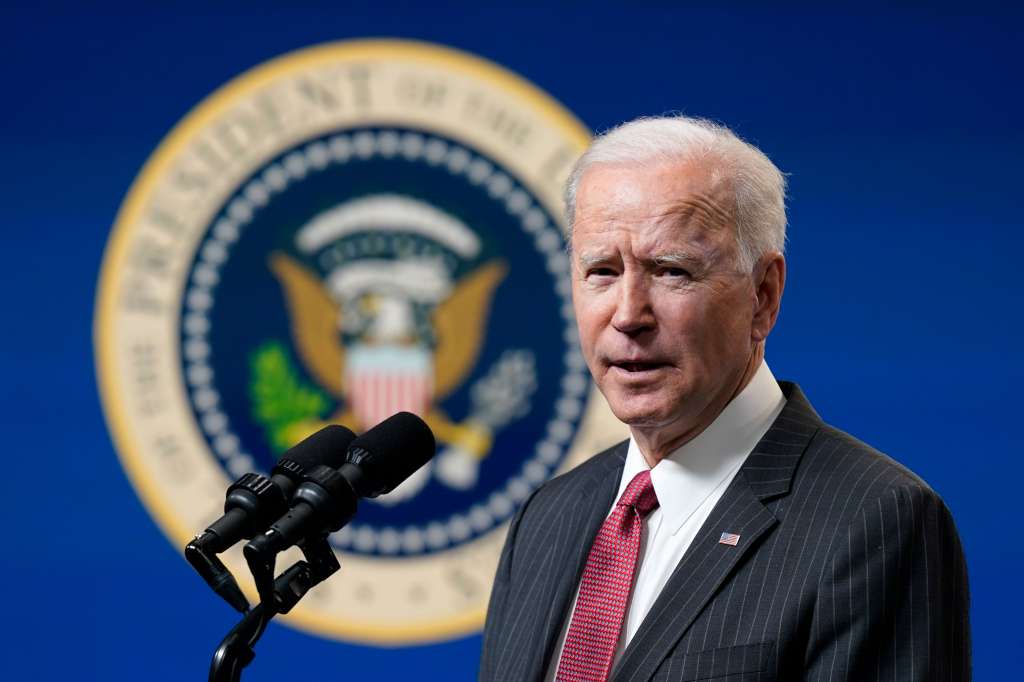WASHINGTON (AP) — The Biden administration on Monday transferred a detainee out of the Guantánamo Bay detention facility for the first time, sending a Moroccan man back home years after he was recommended for discharge.
The Moroccan prisoner, Abdullatif Nasser, who’s in his mid-50s, was cleared for repatriation by a review board in July 2016 but remained at Guantanamo for the duration of the Trump presidency.
The Periodic Review Board process determined that Nasser’s detention no longer remained necessary to protect U.S. national security, the Pentagon said Monday in a statement. The board recommended authorization for Nasser’s repatriation, but that couldn’t be completed before the end of the Obama administration, it said.
The transfer of Nasser could suggest President Joe Biden is making efforts to reduce the Guantanamo population, which now stands at 39. Presidents George W. Bush and Barack Obama supported the prisoner transfer process, but it stalled under President Donald Trump.
Trump said even before he took office that there should be no further releases from “Gitmo,” as Guantanamo Bay is often called. “These are extremely dangerous people and should not be allowed back onto the battlefield,” he said then.
The possibility that former Guantanamo prisoners would resume hostile activities has long been a concern that has played into the debate over releases. The office of the Director of National Intelligence said in a 2016 report that about 17% of the 728 detainees who had been released were “confirmed” and 12% were “suspected” of re-engaging in such activities.
But the vast majority of those re-engagements occurred with former prisoners who did not go through the security review that was set up under Obama. A task force that included agencies such as the Defense Department and the CIA analyzed who was held at Guantanamo and determined who could be released and who should continue in detention.
The U.S. thanked Morocco for facilitating Nasser’s transfer back home.
“The United States commends the Kingdom of Morocco for its long-time partnership in securing both countries’ national security interests,” the Pentagon statement said. “The United States is also extremely grateful for the Kingdom’s willingness to support ongoing U.S. efforts to close the Guantanamo Bay Detention Facility.”
Nasser initially got news he was going to be released in the summer of 2016, when one of his lawyers called him at the detention center and told him the U.S. had decided he no longer posed a threat and could go home. He thought he’d returned to Morocco soon: “I’ve been here 14 years,” he said at the time. “A few months more is nothing.”
Nasser’s journey to the Cuban prison was a long one. He was a member of a nonviolent but illegal Moroccan Sufi Islam group in the 1980s, according to his Pentagon file. In 1996, he was recruited to fight in Chechyna but ended up in Afghanistan, where he trained at an al-Qaida camp. He was captured after fighting U.S. forces there and sent to Guantanamo in May 2002.
An unidentified military official appointed to represent him before the review board said he studied math, computer science and English at Guantanamo, creating a 2,000-word Arabic-English dictionary. The official told the board that Nasser “deeply regrets his actions of the past” and expressed confidence he would reintegrate in society.
(Copyright (c) 2024 The Associated Press. All Rights Reserved. This material may not be published, broadcast, rewritten, or redistributed.)

